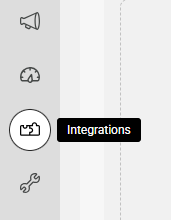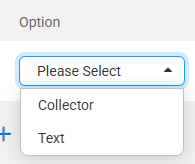How to Integrate SAS Flex with Zendesk
Zendesk is an online support ticket system that enables you to keep track of all new support tickets submitted by your customers, whether online or via phone. If your business uses this software, integrating your account with the Zendesk app in the portal will automatically push data from your calls into your ticketing system. This eliminates the need for you to do double the work, converting messages into Zendesk cases.
In this article we'll discuss:
Before you are able to connect your account to Flex's Zendesk app, you must update the Redirect URL within your OAuth Client authorization token to https://flexclient.sasdesk.com/Zendesk/setToken. For more information on setting up your OAuth token, check out this article.
Connect Zendesk with Your SAS Flex Account



Setting Contact Data Parameters


If Send call data on behalf of email provided by caller. is chosen, cases will be created under the email address the caller provides. Note that if the caller does not provide an email address, data will be sent from the Zendesk account owner's email by default.
If Send call data from notifications@sasdesk.com is chosen, cases will be created under the email address notifications@sasdesk.com.
If Send data from email address is chosen, cases will be created under the static email address you enter.

If Don't update existing contacts. Create new ones. is chosen, SAS will look for an email match in your Zendesk installation. If there is no match, it will create a new case and a new contact. If there is an email match, it will just create a new case.
If Update contacts by overwriting any data with details from SAS. is chosen, SAS will look for an email match in your Zendesk installation. If there is a match, it will overwrite any existing customer data with data we've received from the call.
If Update contacts by appending details from SAS without overwriting existing data. is chosen, SAS will look for an email match in your Zendesk installation. If there is a match, it won't overwrite data but will add any new details received.

Configure Custom Mappings (Optional)
Once the data section is complete, you can map your call data directly to specific Zendesk fields by adding Custom mappings.


Collector will allow you to use specific SAS script variables to populate Zendesk's fields. If you select Collector, use the dropdown in the second column to select a script variable.
Text gives you the option to type your own data rather than using SAS variables. If you select Text, the second column will be a blank box where you can type specific information.

The Object drop down gives you options for Users or Ticket. In Zendesk, Users and Ticket both have their own default fields, such as Name or Group. The Object determines which default fields will be available.

The Type drop down gives you options for Standard or Custom. Selecting Standard will bring up the default fields for the Object you selected. Setting it to Custom will bring up any custom fields that you have built into your Zendesk system.

The Mapping drop down will display the Standard or Custom fields within your Zendesk setup.



Integrate Zendesk into Your Script
When all of your integration settings are complete, contact SAS at service@specialtyansweringservice.net to add the integration into the appropriate block in your SAS script, or follow these instructions to integrate the app yourself.
If you've disconnected and reconnected your configuration at any point, you'll need to re-integrate it into your script.
